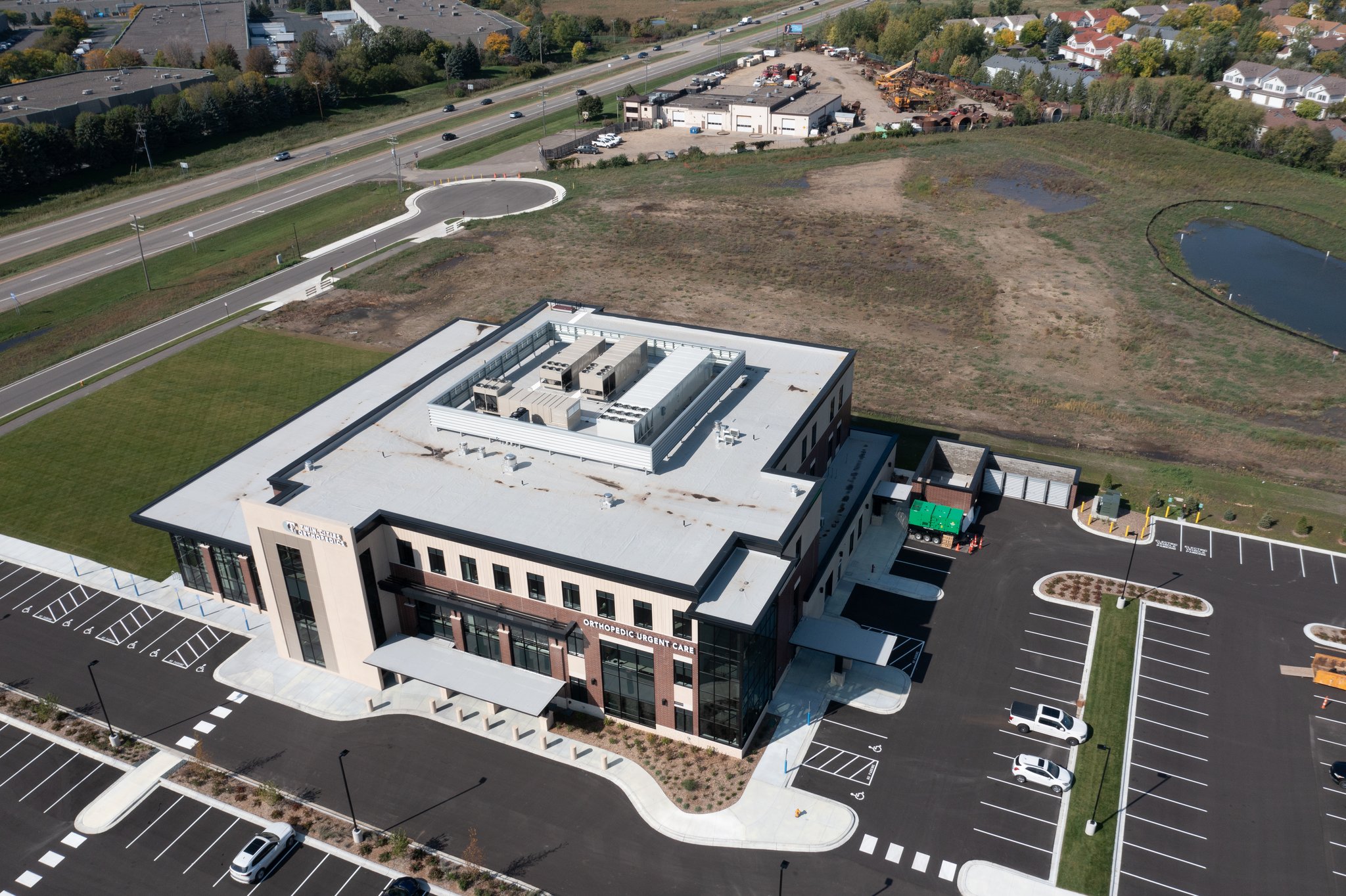EPDM vs TPO: What’s the best commercial roofing material?
The right flat commercial roofing system can make all the difference in longevity, energy efficiency, and overall cost-effectiveness. Flat roofs, a common feature in commercial properties, demand materials that can withstand diverse weather conditions and provide durability over time.
EPDM (Ethylene Propylene Diene Monomer) and TPO (Thermoplastic Olefin) are two of the most popular options in Minnesota. We recently blogged about EPDM, but in this blog we will compare these two materials, their benefits, and how to choose the best option for your property.
What is EPDM?
Definition and Composition
EPDM stands for Ethylene Propylene Diene Monomer, a synthetic rubber material composed of ethylene and propylene derived from oil and natural gas. EPDM roofing membranes are known for their flexibility and durability, making them a popular choice for flat roofing systems.
Key Characteristics
EPDM membranes are available in black or white colors and various thicknesses. They are highly resistant to UV radiation, ozone, and extreme weather conditions, including hot and cold temperatures. Their elasticity allows them to move with the building, which is crucial for preventing cracks and leaks.
Typical Applications
EPDM is a material commonly used in commercial buildings with flat roofs, such as warehouses, shopping centers, and office buildings. Its long-lasting nature makes it ideal for properties where maintenance needs to be minimized.
What is TPO?
Definition and Composition
TPO, or Thermoplastic Olefin, is a single-ply roofing membrane. It combines ethylene-propylene rubber with polypropylene, creating a material with excellent performance characteristics. TPO is designed to be heat-welded at the seams, providing a robust and durable roofing solution.
Key Characteristics
TPO membranes are typically white, gray, or tan. Their reflective surface helps reduce energy costs by reflecting UV rays. They are also resistant to mold, punctures, and tears, making them a durable option for various commercial applications.
Typical Applications
TPO is widely used in commercial buildings, especially those that enhance energy efficiency. It’s often seen on large flat roofs of supermarkets, distribution centers, and industrial buildings.
Comparing EPDM and TPO
Durability and Lifespan
EPDM’s Long-Term Performance
EPDM has been a trusted roofing material for over 50 years. Its flexibility and resistance to UV radiation make it highly durable, often lasting over 25 years with proper maintenance. The rubber composition means it can handle temperature fluctuations without cracking.
TPO’s Weather Resistance
TPO, though newer, has gained popularity due to its excellent weather resistance. It can withstand high winds, impact, and punctures. TPO membranes typically have a lifespan of 15-20 years, depending on the quality and installation.
Energy Efficiency
EPDM’s Heat Absorption Properties
Black EPDM membranes absorb heat, which may increase cooling costs. However, white EPDM options are available, reflecting more sunlight and helping reduce energy consumption. The choice of color can significantly impact the overall energy efficiency of the building.
TPO’s Reflective Surface and Energy Savings
TPO membranes are inherently reflective, especially in lighter colors like white and tan. This reflectivity helps reduce the heat the roof absorbs, lowering cooling costs and contributing to a more energy-efficient building. TPO is often favored in regions with hot climates.
Installation Process
EPDM’s Adhesive-Based Installation
EPDM roofing systems are installed using adhesive, mechanical fasteners, or ballasting. The process is relatively straightforward, but skilled labor is required to ensure proper adhesion and seamless application. EPDM’s flexibility allows for easy installation around curves and edges.
TPO’s Heat-Welded Seams
TPO membranes are heat-welded at the seams, creating a strong, watertight bond. This method ensures that the seams are less likely to fail than other joining techniques. However, the installation requires specialized equipment and expertise, making it slightly more complex than EPDM.
Cost Considerations
Initial Costs of EPDM vs TPO
EPDM is generally more affordable upfront than TPO. The cost of materials and installation for EPDM tends to be lower, making it an attractive option for budget-conscious projects. However, the total cost can vary based on the thickness and type of EPDM used.
Long-Term Maintenance Expenses
While EPDM may have lower initial costs, TPO can offer savings in long-term maintenance. TPO’s heat-welded seams are less prone to leaks, reducing repair costs over time. The energy savings from TPO’s reflective surface can also offset some of the initial investment.
Environmental Impact
Recyclability of EPDM and TPO
Both EPDM and TPO are considered environmentally friendly options in roofing materials. EPDM can be recycled, reducing waste and contributing to sustainable building practices. TPO is also recyclable, and its energy efficiency further supports environmental goals.
Energy Efficiency Comparisons
When comparing the energy efficiency of EPDM and TPO, TPO generally comes out ahead due to its reflective properties. However, choosing white EPDM can also provide significant energy savings. The decision should be based on the building’s specific climate and energy needs.
Choosing the Right Roofing System
Factors to Consider
When selecting between EPDM and TPO, consider factors such as climate, building use, and budget. EPDM may be more suitable for areas with extreme temperature fluctuations, while TPO’s energy efficiency makes it ideal for hot climates.
Importance of Professional Assessment
It’s crucial to consult with roofing experts to assess your building’s specific needs. Their professional insights into the best material based on your location, building structure, and long-term goals will provide you with the reassurance that you’re making the right decision.
Conclusion
Choosing between EPDM and TPO for your commercial roofing system significantly impacts your building’s durability, energy efficiency, and overall cost. While EPDM offers flexibility and long-term performance, TPO provides excellent weather resistance and energy savings.
Each material has unique benefits; the best choice depends on your circumstances. Consulting with roofing professionals like Mint Roofing will help ensure you make an informed decision that aligns with your needs and budget.
Remember, the right roofing system protects your investment and contributes to a more sustainable and efficient building.
For more detailed information on TPO roofing systems, visit Carlisle SynTec Systems, a leading manufacturer in the industry.
FAQs
Q: Which is better, EPDM or TPO?
A: Both EPDM and TPO have their benefits and are suitable for different circumstances. EPDM is a tried and tested material with a longer lifespan, while TPO offers superior weather resistance and energy efficiency. Consult with roofing professionals to determine the best option for your building.
Q: Is TPO more expensive than EPDM?
A: This depends on various factors such as location, roof size, and type of installation. In general, TPO may cost more upfront due to its specialized installation process, but it can offer savings in the long run through reduced maintenance costs and energy efficiency.
Q: Are both EPDM and TPO environmentally friendly?
A: Yes, both EPDM and TPO are considered environmentally friendly options for roofing materials. EPDM can be recycled, and TPO’s energy efficiency contributes to sustainable building practices. However, it’s essential to consider the environmental impact of the manufacturing process as well when choosing a roofing system.
Q: Which roofing system is better for cold Minnesota climates, EPDM or TPO?
A: In cold climates, EPDM may be a better option due to its flexibility and ability to withstand extreme temperature fluctuations. However, TPO can also perform well in colder regions if installed correctly with appropriate insulation and attachment methods. Consulting with roofing professionals is recommended for the best choice in your specific climate.
Q: Are white commercial roofing materials more energy-efficient than black?
A: White commercial roofing materials tend to be more energy efficient than black, but it ultimately depends on the building’s specific climate and energy needs. White material reflects sunlight, reducing cooling costs, while black material absorbs heat and can help with heating costs in colder climates.


